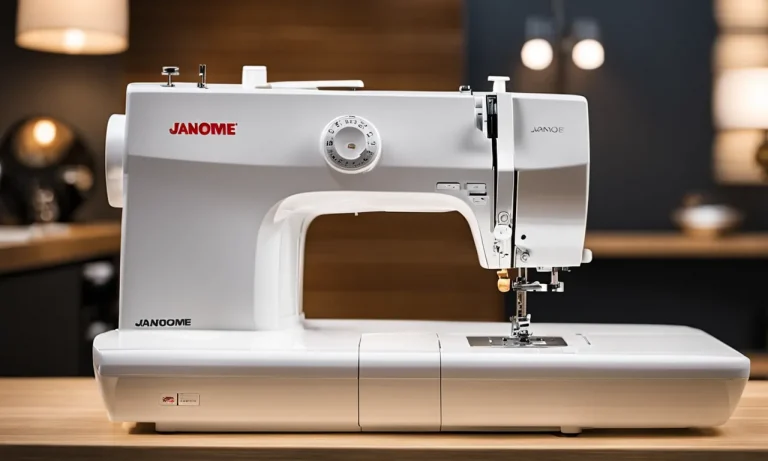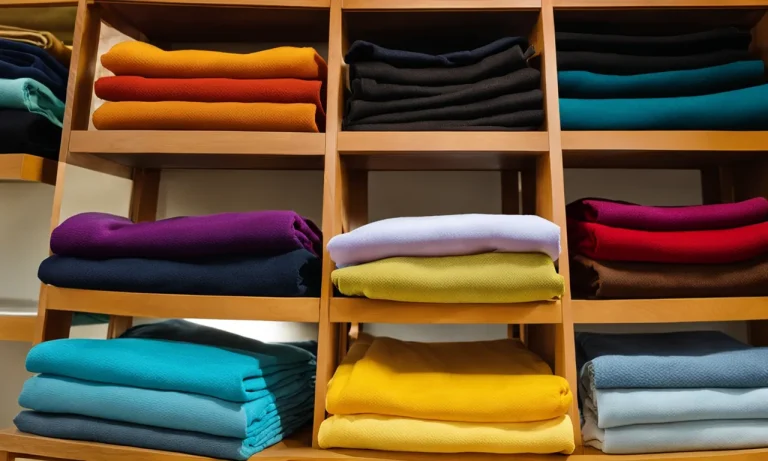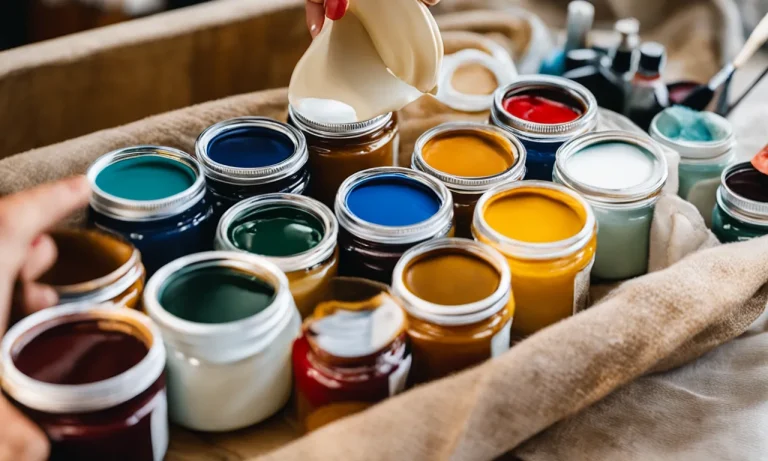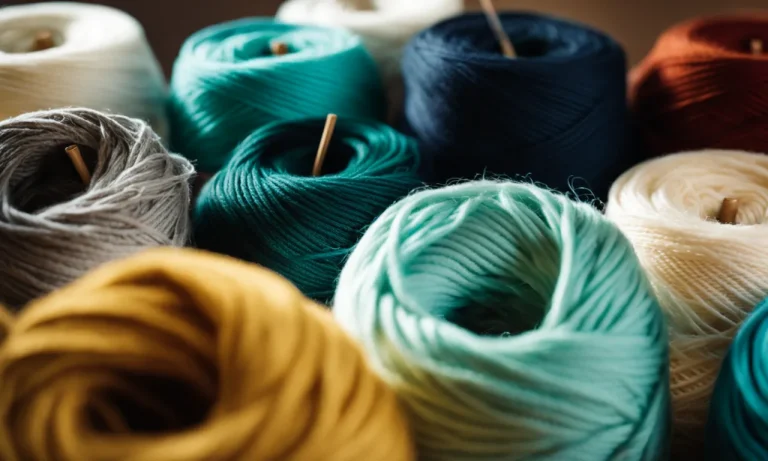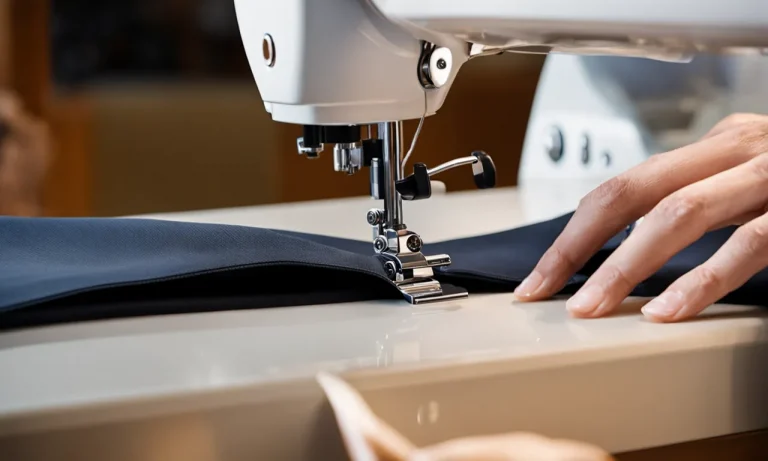How To Get Sharpie Out Of Fabric: A Comprehensive Guide
We’ve all been there – you’re labeling clothes or making a creative project, marker in hand, when disaster strikes. A wayward scribble leaves a stubborn stain on your favorite shirt or pair of jeans. Before you resign that item to the donate pile, don’t panic!
Removing sharpie from fabric isn’t impossible with the right techniques.
If you’re short on time, here’s a quick answer to your question: Blot the stain immediately and use rubbing alcohol, hairspray, or hand sanitizer on the ink. For more stubborn stains, make a paste of baking soda and water and let it sit before laundering as usual.
In this comprehensive guide, we’ll go over several DIY methods for removing sharpie stains from fabric and clothes. Whether the stain is fresh or has set, there are options for getting sharpie out of all types of material.
Read on for tips, step-by-step instructions, and advice for tackling stained clothes, upholstery, and more.
Supplies You’ll Need
When it comes to removing Sharpie stains from fabric, having the right supplies on hand can make all the difference. Here are some items you’ll want to gather before getting started:
Rubbing alcohol
Rubbing alcohol is a versatile cleaning agent that can be effective in removing Sharpie stains from fabric. It acts as a solvent and breaks down the ink, making it easier to remove.
Hairspray or hand sanitizer
Hairspray and hand sanitizer contain alcohol, which can also help in breaking down the ink. They can be used as alternatives to rubbing alcohol if it’s not readily available.
Baking soda
Baking soda is known for its ability to absorb odors, but it can also help in lifting stains. When mixed with water to form a paste, it can be applied to the stained area to help remove the Sharpie ink.
Dish soap
Dish soap is a staple in many households and can be effective in removing a variety of stains, including Sharpie ink. Its grease-cutting properties can help break down the ink and make it easier to remove from fabric.
White vinegar
White vinegar is another household item that can be used to remove Sharpie stains. Its acidic properties can help break down the ink and lift it from the fabric.
Laundry detergent
Regular laundry detergent can also be used to remove Sharpie stains. It is designed to remove tough stains from fabric and can be effective in breaking down the ink.
Toothpaste
Surprisingly, toothpaste can be used as an effective stain remover for Sharpie marks on fabric. Its mild abrasive properties can help lift the ink from the fabric fibers.
OxiClean
OxiClean is a powerful stain remover that can be used on a variety of fabrics. It can be particularly effective in removing tough stains like Sharpie ink.
Cotton swabs and rags
Cotton swabs and rags are essential tools for applying the cleaning solutions and blotting the stained area. They allow for more precise application and help in absorbing the ink.
Washing machine
While not a supply per se, a washing machine can be a useful tool for removing Sharpie stains from fabric. After treating the stain, laundering the fabric can help remove any remaining ink and restore the fabric to its original condition.
Tackling Fresh Stains
Accidents happen, and if you find yourself with a fresh Sharpie stain on your favorite fabric, don’t panic! With the right techniques, you can effectively remove the stain and salvage your item. In this section, we will explore different methods to tackle fresh stains and get your fabric looking good as new.
Blot with a rag
The first step in treating a fresh Sharpie stain is to blot the affected area with a clean rag. This will help absorb as much of the ink as possible before it sets into the fabric. Remember to blot gently to avoid spreading the stain further.
Use alcohol, hairspray, or sanitizer
One popular method for removing Sharpie stains from fabric is to use alcohol. Rubbing alcohol, hairspray, or hand sanitizer containing alcohol can be effective in breaking down the ink. Simply apply a small amount to a clean cloth and dab it onto the stain, working from the outside toward the center.
Continue until the stain is no longer visible.
Make a baking soda paste
If you prefer a natural solution, you can make a baking soda paste to tackle the stain. Mix equal parts baking soda and water to create a paste, then apply it to the stained area. Gently rub the paste into the fabric using a soft cloth or sponge.
Let it sit for a few minutes before rinsing with cold water.
Scrub with dish soap
Dish soap can also be effective in removing fresh Sharpie stains. Apply a small amount of dish soap directly to the stain and gently work it into the fabric using a soft brush or sponge. Rinse the area with cold water and repeat the process if necessary until the stain disappears.
Launder as usual
Once you have treated the stain using one of the above methods, it’s important to launder the fabric as usual. Follow the care instructions on the garment and wash it accordingly. Check the fabric after laundering to ensure the stain is completely gone.
If any traces of the stain remain, repeat the previous steps until it is fully removed.
Remember, different fabrics may require different treatment methods, so it’s always a good idea to test any cleaning solution on a small, inconspicuous area of the fabric first. Additionally, prompt action is key when it comes to removing Sharpie stains, as they can become more difficult to remove once they set into the fabric.
For more information and tips on stain removal, you can visit websites like Good Housekeeping or The Spruce.
Removing Set-In Stains
Set-in stains can be particularly stubborn to remove, but with the right techniques and products, it is possible to get rid of them. Here are some effective methods to remove set-in stains from fabric:
Make a baking soda and vinegar paste
One popular method for removing set-in stains is to create a paste using baking soda and vinegar. Start by mixing equal parts of baking soda and vinegar to form a thick paste. Apply the paste directly onto the stain and gently rub it in using a soft cloth or sponge.
Let the paste sit on the stain for about 30 minutes, then rinse with cold water. Repeat the process if necessary.
Use toothpaste
Toothpaste, specifically white toothpaste, can also be effective in removing set-in stains from fabric. Apply a small amount of toothpaste onto the stain and use a soft toothbrush to gently scrub the area. Rinse with cold water and repeat the process if needed.
Toothpaste contains mild abrasives that can help break down the stain and lift it from the fabric.
Try OxiClean
OxiClean is a powerful stain remover that can be used on various types of fabric. Follow the instructions on the OxiClean packaging to create a solution and apply it directly onto the set-in stain. Gently scrub the stain using a soft brush or sponge, then let it sit for the recommended amount of time.
Rinse thoroughly with cold water and launder the fabric as usual. OxiClean is known for its ability to tackle tough stains and can be a great option for set-in stains.
Spot treat and launder
If the set-in stain persists after trying the above methods, spot treating the stain before laundering may be necessary. Apply a small amount of stain remover or liquid laundry detergent directly onto the stain and gently rub it in. Let it sit for a few minutes, then launder the fabric as usual.
Make sure to check the care instructions on the fabric before using any stain removers or detergents to avoid damaging the material.
Remember, it’s always best to treat set-in stains as soon as possible to increase your chances of successful removal. If the stain persists or if you’re dealing with delicate or valuable fabric, it’s recommended to consult a professional cleaner for further assistance.
Stain Removal by Fabric Type
Cotton
Cotton is a durable and versatile fabric that is commonly used in clothing and household items. When it comes to removing Sharpie stains from cotton, acting quickly is essential. Start by blotting the stain with a clean cloth or paper towel to remove any excess ink.
Then, apply a small amount of rubbing alcohol or isopropyl alcohol to a cotton ball or clean cloth and gently dab the stain, being careful not to rub it further into the fabric. Rinse the area with cold water and repeat the process if necessary.
For stubborn stains, you can also try using a mixture of dish soap and hydrogen peroxide. Remember to always check the care label of your cotton item before attempting any stain removal method.
Polyester and Synthetic Fabrics
Polyester and synthetic fabrics are known for their durability and resistance to stains. However, when it comes to removing Sharpie stains from these fabrics, it is important to act quickly. Start by blotting the stain gently with a clean cloth or paper towel to remove any excess ink.
Then, apply a small amount of rubbing alcohol or isopropyl alcohol to a cotton ball or clean cloth and dab the stain, being careful not to rub it further into the fabric. Rinse the area with cold water and repeat the process if necessary.
If the stain persists, you can also try using a stain remover specifically designed for polyester and synthetic fabrics.
Silk
Silk is a delicate and luxurious fabric that requires special care when it comes to stain removal. If you accidentally get Sharpie on silk, it is best to take it to a professional dry cleaner as soon as possible. Attempting to remove the stain yourself may result in further damage to the fabric.
Professional dry cleaners have the expertise and specialized equipment to safely remove stains from silk without causing any harm. Remember to inform the dry cleaner about the Sharpie stain so they can take appropriate measures to treat it.
Wool and Cashmere
Wool and cashmere are natural fibers that are known for their warmth and softness. When it comes to removing Sharpie stains from these fabrics, it is important to act quickly. Start by blotting the stain gently with a clean cloth or paper towel to remove any excess ink.
Then, apply a small amount of rubbing alcohol or isopropyl alcohol to a cotton ball or clean cloth and dab the stain, being careful not to rub it further into the fabric. Rinse the area with cold water and repeat the process if necessary.
If the stain persists, it is best to take the wool or cashmere item to a professional dry cleaner for further treatment.
Leather and Suede
Leather and suede are unique fabrics that require special care when it comes to stain removal. If you accidentally get Sharpie on leather or suede, it is best to take it to a professional leather cleaner as soon as possible.
Attempting to remove the stain yourself may result in further damage to the fabric. Professional leather cleaners have the expertise and specialized products to safely remove stains from leather and suede without causing any harm.
Remember to inform the cleaner about the Sharpie stain so they can take appropriate measures to treat it.
Preventing Future Stains
Once you’ve successfully removed Sharpie stains from fabric, the last thing you want is for it to happen again. Here are some preventive measures you can take to avoid future stains:
Use a stain guard
One effective way to prevent Sharpie stains is to apply a stain guard to your fabric. Stain guards create a protective barrier on the fabric’s surface, making it harder for the ink to penetrate and stain.
You can find stain guard products specifically designed for fabric at your local home improvement or fabric store. Follow the instructions on the product label to apply it correctly, and remember to reapply it periodically for optimal protection.
Cover work surfaces
When using Sharpie markers, it’s important to protect your work surfaces to prevent accidental spills and stains. Place a protective covering, such as a plastic tablecloth or old newspaper, on your work area before starting any projects.
This will catch any ink that may accidentally leak from the markers and prevent it from seeping into your fabric.
Wash regularly
Maintaining a regular washing routine for your fabric items can help prevent stains from setting in. Regular washing not only removes dirt and grime but also helps remove any ink residue that may have transferred onto the fabric.
Follow the care instructions for your specific fabric and wash it as recommended. If you’ve used Sharpie markers on a garment, consider washing it separately or with similar colors to prevent any potential bleeding or transfer of ink.
By implementing these preventive measures, you can reduce the risk of future Sharpie stains on your fabric items. Remember, prevention is always better than trying to remove stains later on!
Conclusion
While sharpie stains can seem impossible to remove at first, with a little bit of elbow grease and the right cleaning agents, you can erase those marks from fabric and clothing. Acting quickly when you first notice the stain will make the process easier.
For set-in stains, be patient and try a few different techniques. With the methods outlined here, you can rescue your garments and upholstery from sharpie scribbles. Just be gentle, check care labels, and test any removers in an inconspicuous area first.
With some perseverance, you can outsmart sharpie stains and save your belongings from the donation pile.


